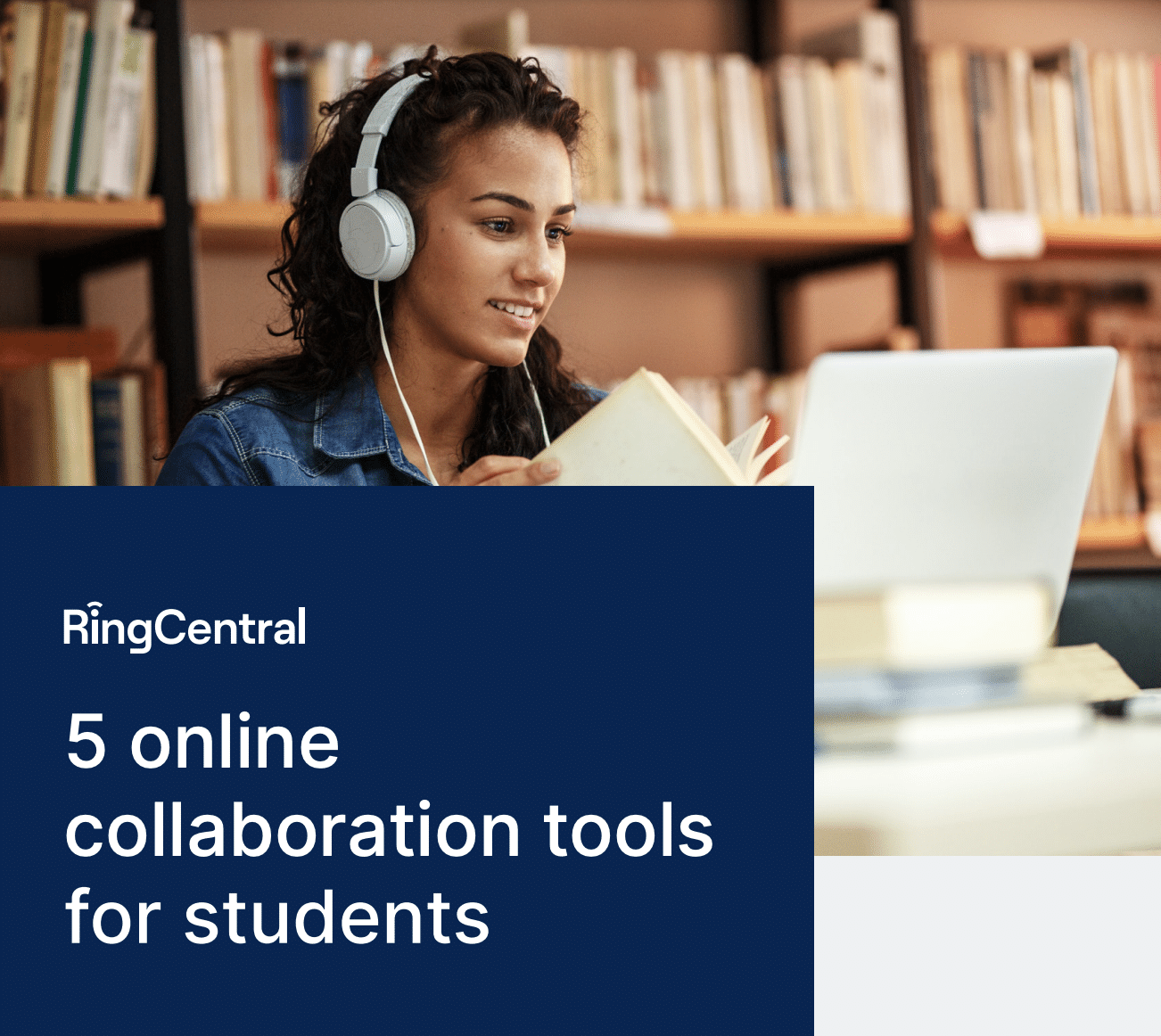Highlights:
- Distance learning can make collaboration with and among students challenging, but encouraging online collaboration is essential to student success.
- Online collaboration calls for a different approach than educators might take in a physical classroom.
- From the first interaction with students, educators can encourage open discussion of what is expected regarding collaboration and communication.
- Using the right collaboration tools can help students interact and learn from each other.
It may feel like déjà vu, but it’s here and happening: the approach of another semester dominated by distance learning and online lectures.
Students and teachers may sigh, but if there’s any good news, it’s that the past eighteen months have taught us much about building a conducive learning environment in the digital realm with the right online collaboration tools for education.

5 online collaboration tools for students
The absolute key is attention retention; when it’s easier than ever for students to browse Facebook or Instagram during class, you can’t take their attention for granted.
So how do you earn it?
The answer lies in interaction and discussion. Whenever possible, keep lectures at a minimum and foster a culture of collaboration.
Easier said than done? Maybe. But here are five ways to help you get started.
1. Let students set new norms
It’s a mistake to assume that the digital classroom is simply the physical classroom in another dimension. It’s an entirely different space, facing different challenges and governed by different rules.
What that means is that you’ll have to set new norms, and it’s best if the students have a say.
What are students looking to get from this class? What do they expect from each other? What do they expect from the educator? What can the educator expect from them?
Discuss this, but don’t stop there.
Publish the norms; a concrete manifestation will not only keep them alive, but it will also serve as a physical reminder of the democratic process and help students feel empowered and involved.
Reflect upon the norms. In the face of unprecedented situations, should they be changed? Talk about that. Revise the norms if necessary.
The ultimate goal is to build a sense of community, a crucial first step in fostering a culture of collaboration.
2. Let students humanize themselves
The second step of this process is humanization.
We’re all familiar with the traditional first-day-of-term routine: the icebreakers, the introductions, the obligatory fun facts. It may be cheesy, and students may groan, but this is a good first step to establishing unknown classmates as real people with distinct interests.
Even throughout the term, students have a litany of random encounters with one another; they borrow pencils, or exchange pieces of paper, or make quiet jokes.
These things don’t happen so naturally online, so teachers must find ways to replicate the experience digitally.
Let students introduce themselves. Let them make jokes. If a dog or cat should intrude onto the screen, acknowledge it. Educator Matthew Kay recommends a daily ritual he calls “house talk,” a five-minute period in which students are free to talk about their general lives.
Fostering mutual respect and interest is critical to building a culture of online collaboration. Students must understand that there is value in communicating with their peers, and they must feel comfortable encouraging that communication. For that to be so, they must acknowledge each other’s humanity.
3. Empower students to teach each other
Sometimes referred to as the “jigsaw method,” this method relies on the contributions of each individual student to form a greater intellectual picture. Studies consistently indicate that one of the best ways to learn the material is to share it with others—that is to say, to teach it.
Divide students into breakout rooms—four per room is a good number—and assign each member a different aspect of any given topic. Once they’ve done their research, let each member share with the others what they’ve learned, and allow other members to ask questions.
Not only does this technique improve information retention, but students will likely draw connections and form conclusions they wouldn’t have gotten from reading a textbook or watching a lecture. That’s the power of organic collaboration.

4. Brainwrite before a colloquium
A colloquium is essentially a meeting for academic discussion, often organized around a particular topic. It’s a powerful tool for engaging students, but to awaken its full potential, you ought to consider using brainwriting. Brainwriting is when students consider a discussion topic before class, brainstorming ideas in their own time, and submitting them before the greater discussion begins.
Before class, look at students’ responses and pick three or four of the most intriguing responses. When the conversation lulls, share one of these perspectives to get the ball rolling again. In short, brainwriting ensures a diversity of opinions and prevents “anchoring,” the phenomenon by which an initially shared perspective biases the rest of the conversation in that direction.
It also helps quieter students participate in the discussion, as ideas they might hesitate to express in person are introduced through the brainwriting process.
5. Encourage peer revision
Teachers often downplay this fact, but peer revision is already happening. Students constantly share their work with their friends or respected colleagues, particularly at the higher levels. (If a peer finds a typo or logical inconsistency, it may be embarrassing, but it won’t sink their grades.)
Take this one step further. Pair students anonymously and have them review each other’s work. This lets each student, including shy ones, benefit from individualized attention and consideration. Even better, this technique cements the value of obtaining their peers’ opinions. “Hey,” they might think, “I didn’t consider that—what an intriguing idea.”
The result? Students will gain a more developed appreciation for their colleagues. This should encourage them to seek each other’s opinions more frequently, and more willingly, without your prompting—a key victory for fostering a sense of digital community.

To say that the past eighteen months have been difficult would be an understatement. Teachers are exhausted. Students are not only exhausted, but they’re also disappointed. This is not what they imagined higher education to be.
But while it may be clichéd to say that every cloud has a silver lining, the digital realm offers numerous opportunities. The techniques mentioned above will help draw out students’ potential, allowing them to develop and grow.
Most of all, be kind to students and to yourself. This will encourage collaboration like nothing else.
Let RingCentral help you connect and collaborate
To encourage real collaboration between students, it’s also important to have the underlying technology in place to support it. RingCentral leads the way in bringing cloud-based unified communications solutions to institutions of higher learning. Get a demo today to see what’s available.
Originally published Oct 19, 2021, updated Oct 18, 2021
